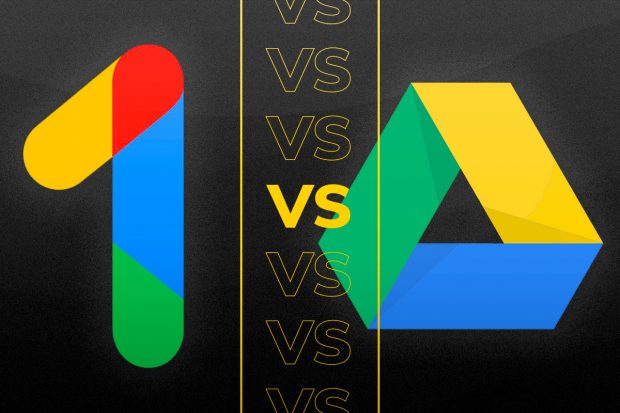Google One vs Google Drive: Should you be paying for cloud storage?

Google One vs Google Drive: Should you be paying for cloud storage?

You might not know it, but Google actually has two cloud storage services to choose from: Google Drive and Google One. We’ve put the two head-to-head to help you decide which service is right for you.
Google Drive is Google’s default storage service. Drive comes free with any personal Google account, allowing users to store, sync and share files across smartphones, tablets and computers. It also lets users invite others to collaborate on documents, making it perfect for productivity too.
Google One is Google’s paid cloud storage service. A step up from Drive, One expands the limits of your storage (depending on how much you’re willing to pay). One also comes with benefits such as discounts and family plans.
So, which storage service is best for you? Read on to find out.
Related: Best Phone
Google One vs Google Drive – Storage and pricing
One of the main factors that differentiates Google One and Google Drive is price. Google Drive is a free storage service with a 15GB limit spread across Google Drive, Gmail and Google Photos.
Google One, on the other hand, requires users to sign up for a subscription plan. Thankfully, it’s easy to keep the cost down, as how much you spend depends on how much storage you need.
Here’s how the Google One pricing tiers look in 2020:
- 100GB storage – £1.59 a month or £15.99 a year
- 200GB storage – £2.49 a month or £24.99 a year
- 2TB storage – £7.99 a month or £79.99 a year
The 100GB package means you can times your default storage by more than six for less than £2 a month, while the largest 2TB package is ideal if you want to stop worrying about storage limits full stop (or at least until you manage to save 2TB worth of photos and documents).
Of course, Google Drive is our winner here – it’s difficult to beat free when comparing prices. However, it’s definitely worth reading on to find out what you could be getting from just £1.59 a month.
Related: Best tablet
Google One vs Google Drive – Features
You’re not just paying for additional storage when you sign up for Google One – the service also comes with some exclusive features you won’t find with your regular Drive account.
Google One benefits include family plans, access to Google experts, up to 10% back in Google store credit and some pretty sweet hotel discounts.
Perhaps the most useful feature is plan sharing. Google One users are able to split their newfound storage with up to five other family members (that’s six people total) at no additional cost by creating a family group. The total storage space is split across any Google Drive, Gmail and Google Photos accounts added to the group, but family members aren’t able to snoop on each others files unless one user specifically gives another permission to do so by sharing that file or folder.
All adults in a family group can go on to access the other benefits of a Google One account, including Google expert support. Google experts are basically a customer support helpline prepared to answer common questions, such as how to recover files and how to use Gmail offline.
Unfortunately, there is no way to allocate equal or specific amounts of storage to each individual in your family group. So, if your dad decides to use up half your storage saving every episode of Game of Thrones to his Google Drive, you’ll need to have a word with him or kick him off the One plan yourself.
When it comes to features, Google One is the obvious winner. You’re not just paying for storage, you’re paying for additional benefits including customer support and exclusive discounts.
Related: Best laptop
Google One vs Google Drive – Backing up your files
Both Google Drive and Google One integrate with Docs, Sheets and Slides, allowing users to back up, share and collaborate on documents with friends, family and colleagues. Both services protect files using SSL/TLS encryption.
Both Google One and Google Drive also allow account holders to back up photos, videos, contacts and more from their iPhone or Android to the cloud.
How to access files, messages and photos once they’re backed up remains the same regardless of which service you use, though each has it’s own respective app to separate the two Google services.
This round is a draw, with both apps offering the same basic services when it comes to backing up your personal files.
Google One vs Google Drive – Verdict
So, do you need Google One? Google actually has a tool that tells you exactly how much storage is available in your current Google Drive which will go a long way in helping you answer that question.
While you won’t lose anything by going over your Drive storage limit, you also won’t be able to save any more original quality images and videos in Google Photos, meaning you’ll be stuck with lower resolution, compressed versions. Your Gmail account could also take a break from receiving emails, which is annoying at best. For anyone who does business or receives important bills and documents through a personal account, missing out on emails could be catastrophic.
The decision fundamentally comes down to how much storage you’re using now and how much you predict you’ll need in the future.
Google Drive is our winner. The default storage service will do the job for most users, offering a decent amount of space at no added cost. However, for those with countless large files and limited space on their devices, a Google One subscription is definitely worth consideration.




















